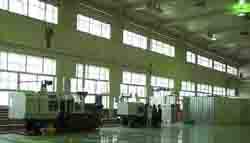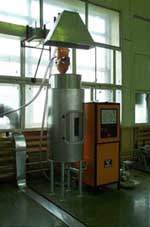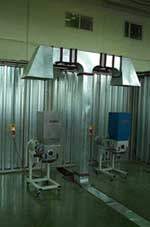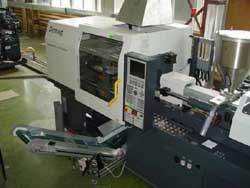IHEP facilities
The research and development programm of plastic scintillators begane in IHEP
at 70-th years.
The works were concentreted in the folowwing directions:
| I
|
the production of polystirene scintillators using the process of styrene polymerization in blocks;
|
| II
|
the extrusion of bulk-polymerized scintillators from blocks;
|
| III
|
the production of molded scintillators by the injection molded technique.
|
Scintillators manufactured by methods I, II were tested and actively used in
domestic experiments at IHEP as well as some experiments abroad.
With the help of method III - the injection molded technique,
large volumes of scintillators for several experiments at the IHEP
(~3 tons) and for hadron calorimeters Hcal 1 and Hcal 2
of experiment in COMPASS (CERN)
(~2 tons) was manufactured in IHEP.
|
|

|

|
|
However, in the past mass production of scintillators was limited
due to technological restrictions on our old equipment.
During the last decade the demand on moulded scintillators for various projects
(PHENIX,
HERA-B,
LHC,
LHC-b)
have inceased up to several tens of tons per year.
Our old molding equipment did not allow IHEP to take obligations on manufacturing
such large volumes of scintillators.
Growing demand on plastic from various experiments such as
PHENIX
(16 tons) and
ATLAS
led to evasion of potential orders on plastic
from IHEP to different companies.
|
Based on the above-mentioned circumstances, the management of IHEP purchased
an additional equipment for the production of plastic scintillators and
sorting out raw material.
|

|
This led to a significant increment in plastic scintillator production
up to ~100 tons per year.
The exact amount of produced plastic scintillators depends on specified features
and parameters of the order.
Thus, the estimated time for these production of 15 tons
of scintillators (more that 750.000 plates)
for the
KOPIO
experiment could be 1.5 years.
Similar plastic scintillators for the
CKM experiment of
FNAL,
where there is a demand; for 11 tons in 25.000 plates,
could be manufactured in 3-4 months.
|

|
|
Along with the moulding technique, the IHEP group intends to expand
its manufacturing facilities to extruded plastic scintillators.
The extrusion technology will allow us to produce flat plates of scintillators
up to 12 meters long
(with width of 650 mm and thickness of 2 to 10 mm).
This extrusion line was installed the first quarter of 2002.
Such extrusion line allows us to produce of more than 100 tons
of plastic scintillators per year.
The flexibility of this equipment will be improved and allow us to produce
flat plates(strips) of plastic scintillators with specified cross-section
(analogous to the ones used in the
MINOS and
OPERA experiments).
|
IHEP's experts are currently working on the creation of new plastic scintillators.
These research investigations go in the following directions:
|
the creation of plastic scintillators with higher light yields and shorter decay times;
|
|
the creation of plastic scintillators with a possibility of effective detection of thermal neutrons;
|
|
plastic scintillators with high levels of radiation hardness;
|
|
composete scintillators for precise calorimetry;
|
|
the creation of high efficiency reflecting coatings for plastic scintillators.
|
|






